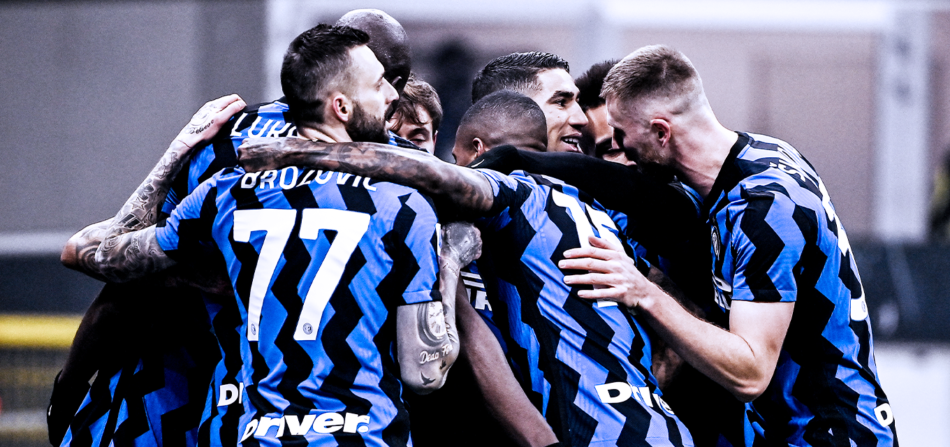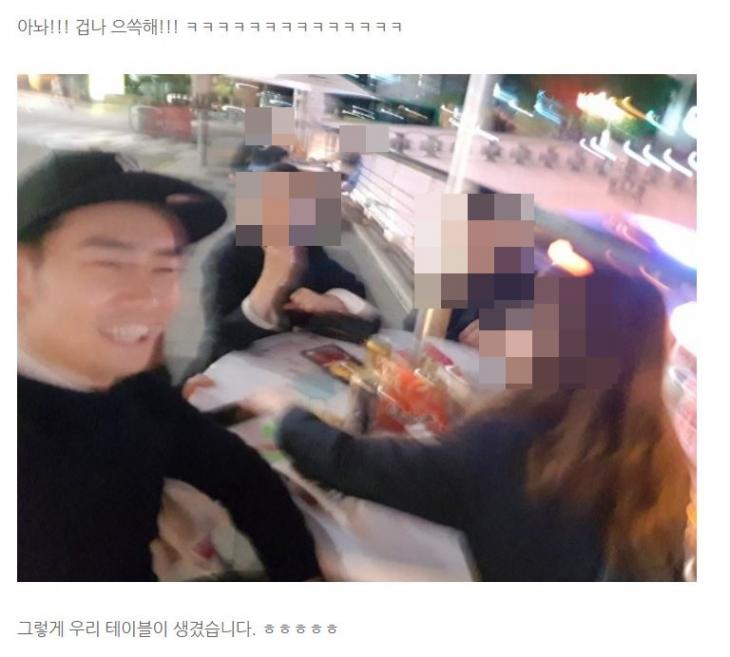A Juventus so powerless against Inter is news. Despite the absences of Cuadrado, de Ligt, Alex Sandro could herald some difficulties for Pirlo’s team, forced to redesign the defense with Frabotta and Chiellini (fresh back) against perhaps the most convincing attack of the championship, it is the way in which the defeat has matured that redefines, at least at this moment, the prospects for both teams.
Conte won his first match as a coach against the Bianconeri with a great demonstration of compactness and competitive spirit: Inter exposed the opponent’s weaknesses simply by doing what they are most used to doing, doing it at their best and playing their best. match in season (so far).
The defensive difficulties of Juventus
From the very first minutes it was evident that Juve had problems pressing the construction of Inter in order. The 4-4-2 bianconero was opposed to the classic roar of construction of Conte’s team and the first problem was numerical: the two strikers, Morata and Ronaldo, were outnumbered against the three defenders, so they initially let one of the two play Inter side defenders, and then press on his pass.
The two outsiders, Chiesa and Ramsey, were called upon to deal with the possible reception of the opposing outsiders, Young and Hakimi, and so the central corridor was left in the hands of the two medians, Rabiot and Bentancur. Usually, when defending with this type of arrangement, to avoid discovering the space in front of the defense too soon, you can choose not to press the lowest opposing midfielder immediately, but to release the marker only at a later time, perhaps exploiting a trap.
The second problem of Juventus, however, concerns the contribution of the strikers to the pressing, in terms of running angles and awareness of the position of the opponents behind them, which usually leaves something to be desired: with Bastoni and Skriniar free to carry the ball, with clean passing lines forward, Juventus’ pressure depended on the aggressive outings of the four midfielders, and on the quality of the pressure of the central defensive players.
Juventus have been carrying these difficulties for over a season, but when they meet teams at ease in moving the ball patiently from below, and which use three central and two mid-height wards, they are further accentuated.
In the first two images Rabiot presses Vidal while Bentancur covers him by staying too far from Brozovic, who receives as a third man and gives way to a scoring opportunity. In the other two, directly on the kick-off of the second half, Juve is immediately disorganized: Ramsey comes out on Skriniar, Bentancur starts to move forward but then lowers himself on Barella, stopping however when he reaches the wing. Frabotta comes out late on Hakimi who receives and finds Brozovic.
To this must be added the difficulty due to the double defensive attitude that Juventus usually has: more aggressive when it is in the opposing half of the pitch, more prudent and attentive to cover when it is in its own trocar.
In short, the levels of readjustment of Juventus’ defensive strategy are many, but they have a common denominator for the correct outcome: intensity. An aspect that Juventus lacked in every respect, mentioned among the first causes of the defeat by Pirlo himself in his post-match interview, which he indicated in the inability to climb quickly on the ball lap of Inter, and to follow the insertions of the opposite mezzala on the weak side with deep folds of the players of the area, one of the key points of the race. These are classic patterns for Conte’s teams, and for this reason, perhaps, the most disheartening thing for Pirlo must have been to realize that his own had not absorbed such basic concepts.
During the construction phase Brozovic managed to find clean receptions behind the Juventus attack, without too much effort, always calm in reading the action; Land mezzali at his flanks, in this way, they were able to worry about creating numerical superiority on the flanks together with the outsiders: on the right, Barella was in constant support of Hakimi against Frabotta and Ramsey, but Skriniar was also seen accompanying on the same lane, while from on the other hand, the same function was performed by Vidal and Bastoni. Another big difference between Inter and Juventus seen last night was the active participation of the defenders in the creation of overloads in advanced areas.
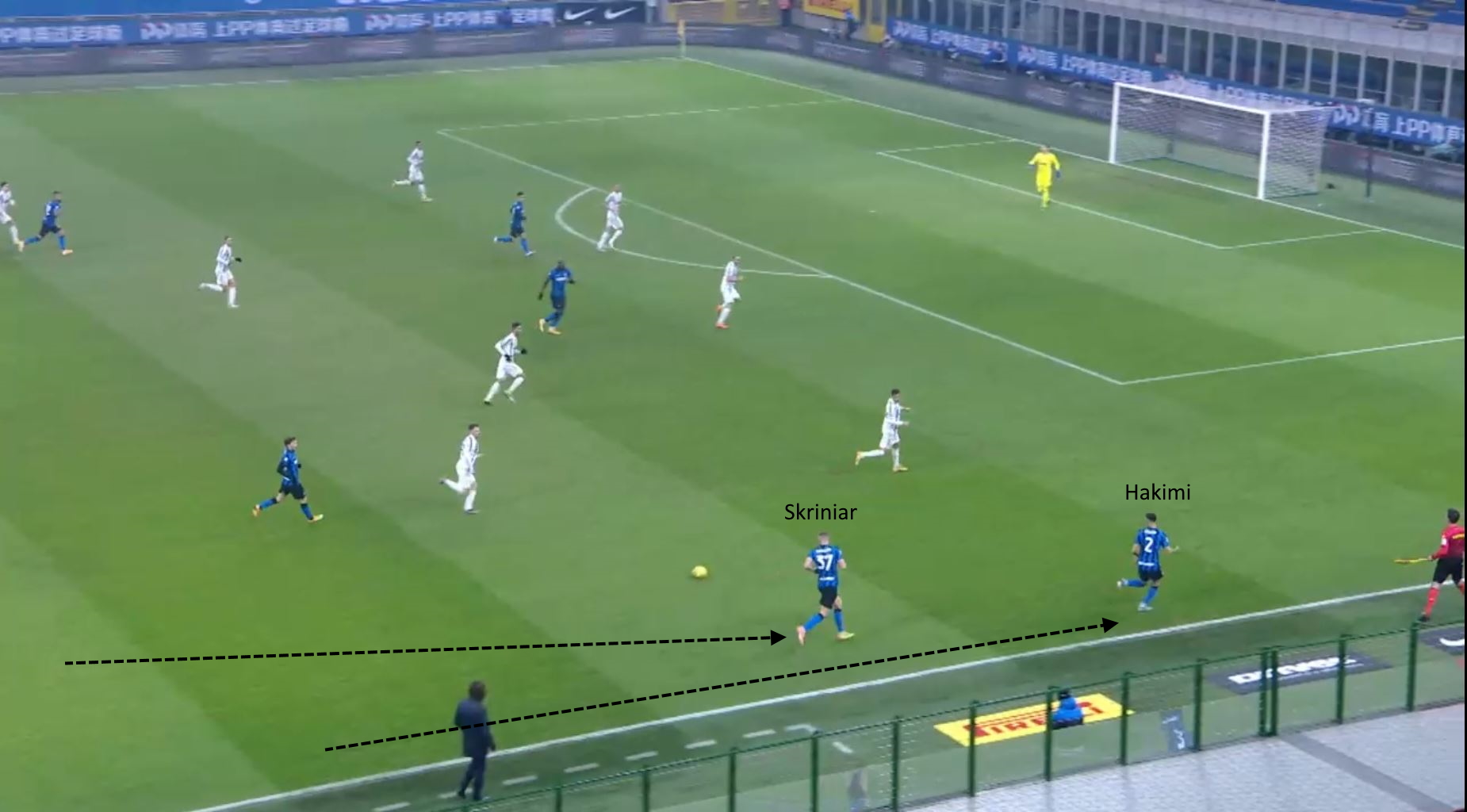 –
––
These are the moments preceding the 1-0 goal, with Barella who cuts outwards and is followed by Ramsey, who will then return to the center leaving him free to cross. In the second image, with Barella in inland areas, Skriniar is supporting Hakimi.
So Inter, even without holding the ball for long periods, managed to put Juventus in a systematic way. Pirlo’s team was moved from one side of the pitch to the other, always forced to chase the field changes horizontally, exposing themselves to the attack of the area, with insertions that he did not control and that also made it other times in the season suffer.
To give the gap between the two teams was also the individual performance of Nicolò Barella, a thorn in the side of the Juventus defense with his forward races, irrepressible even for the medians (impressive action in which he resists the contrast of Rabiot by launching in conduction on the wing) as well as decisive with the goal scored and with the assist with the weak foot.
But the whole team of Conte, beyond the different tactical effectiveness, was particularly clean from the technical point of view: Bastoni and Barella showed it on the occasion of the two goals, but also in other moments the accuracy of the crosses of both was decisive for the creation of opportunities; on the other hand, Juventus suffered from the imprecision and confusion of the side finishes, especially those of Frabotta, who gave the impression of not even looking at his teammates in the area.
Inter’s second goal encompassed many of these themes: the action was born from a dribble between Handanovic and Bastoni, with Morata caught in the middle rotating on himself, undecided whether to release himself on the defender or cover the pass line towards Brozovic , which however was already marked by Rabiot. The raising of Rabiot was accompanied by a simultaneous lowering of Chiesa, running backwards to follow Vidal and thus cover the Chilean. Young attracted Danilo, followed in turn by Chiellini and Bonucci, oriented towards Lautaro and Lukaku. After some melina, Bastoni advanced ball and chain and saw Barella’s sprint into the space to Chiellini’s left, completely uncovered because Frabotta had lingered to provide cover on the weak side and Bentancur, who was in a backward position and could have remedied, did not recognize the potential danger.
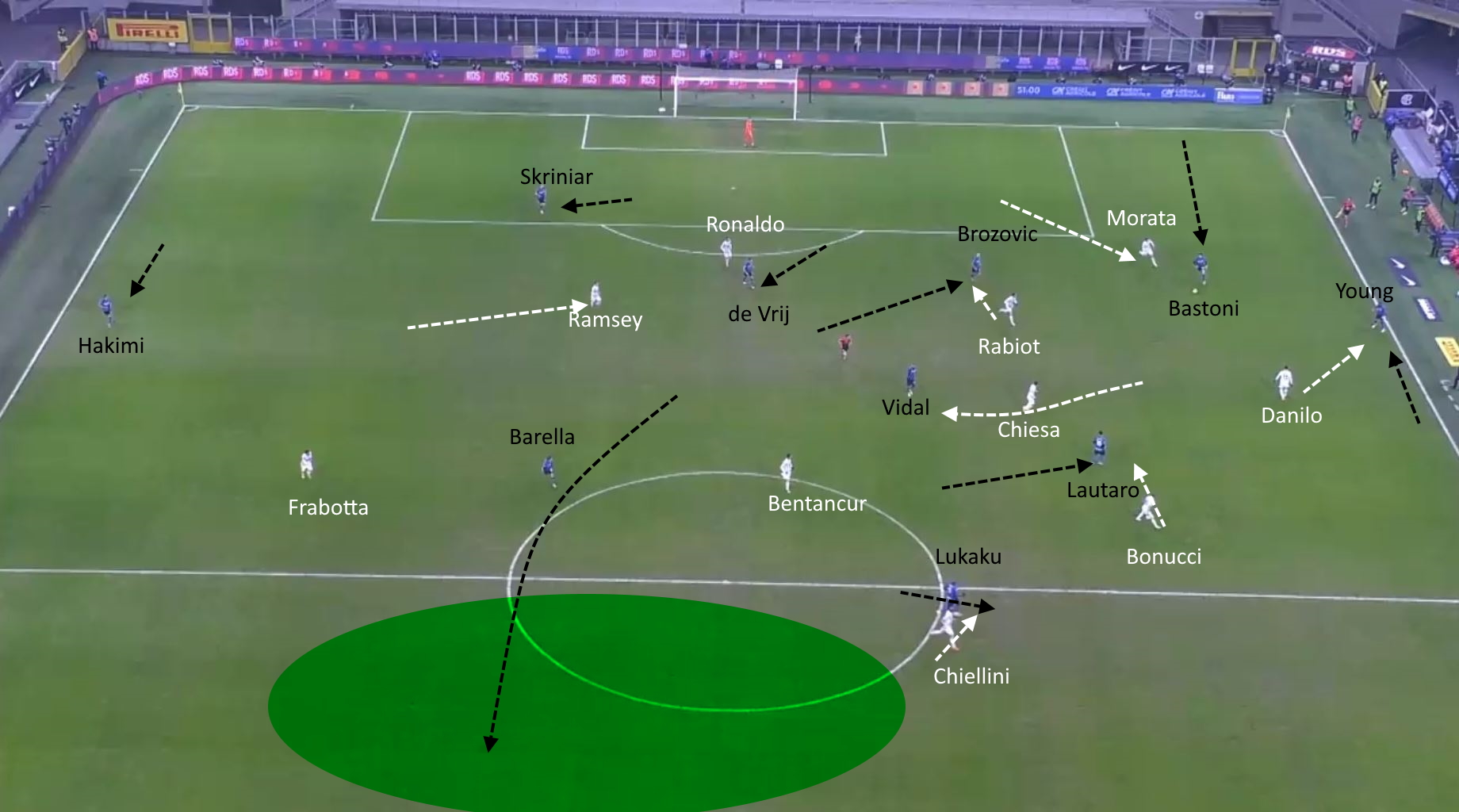
But Juventus also struggled offensively
Without the ball, Inter’s compact block had the objective of shielding any verticalization, between the lines or in depth. Juventus, in theory, should have manipulated the aggressive exits of Conte’s defenders between the lines and then exploited the insertions behind them, but this situation never occurred: the Juventus circulation was mainly perimeter and often ended up being born and dying on the same side of the field, or alternatively led to a forced verticalization.
Still in theory, not finding profitable spaces, Juventus should have moved the ball patiently from one side to the other, quickly but without haste to go to goal: this was precisely the third conceptual problem of the bianconeri (as has already happened at other times in season). This was also shown by the neurotic match of Cristiano Ronaldo, who as always enjoyed absolute freedom in seeking the space to receive the ball, and who often, for the desire to receive as soon as possible against low and compact teams, ends up finding himself with a block compact of opponents between himself and the goal, thus exposing him to the least effective part of his game, that is the management of the timing of the action. Ronaldo tried to solve the problem by looking for the conclusion from a distance, but with disappointing results.
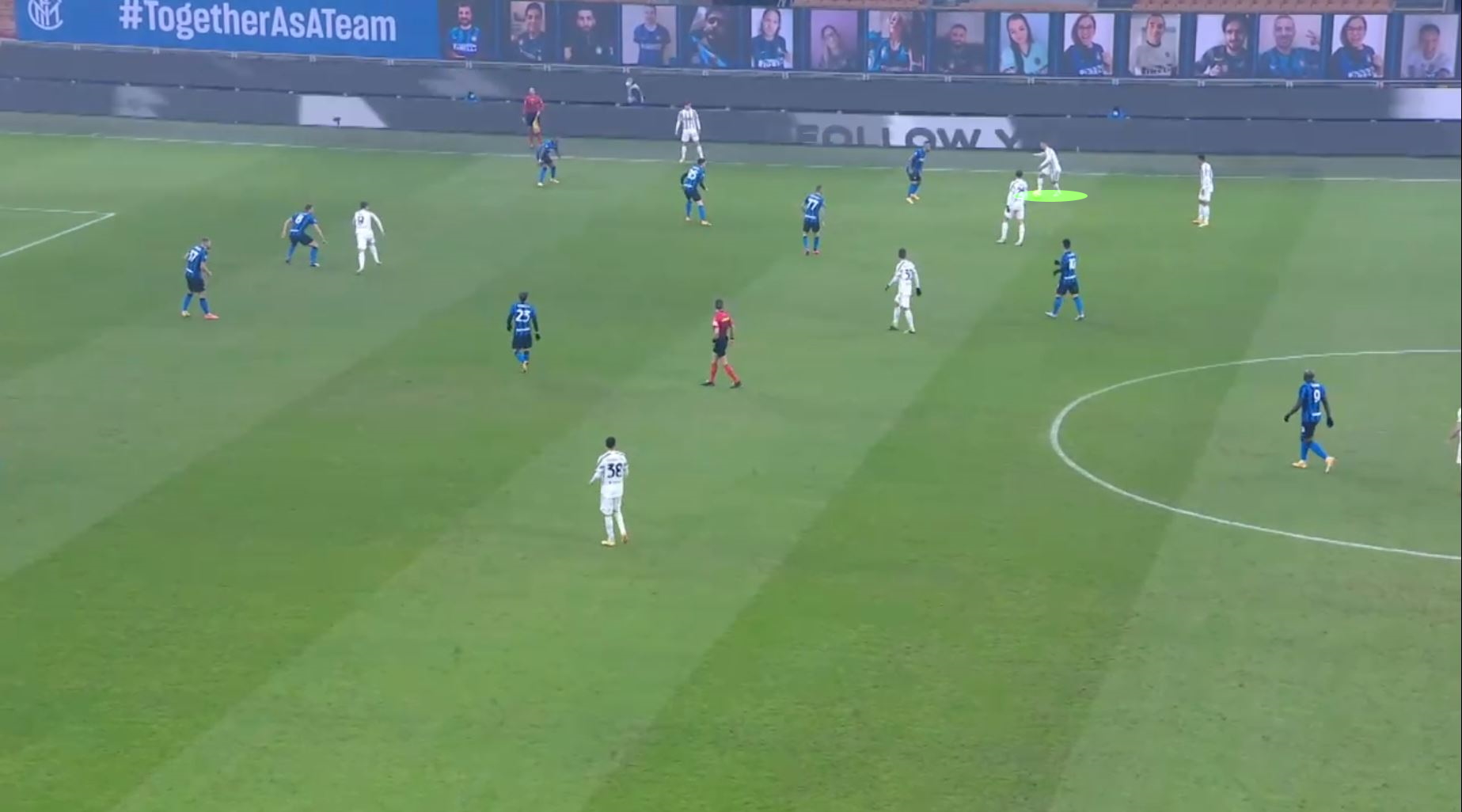 –
–
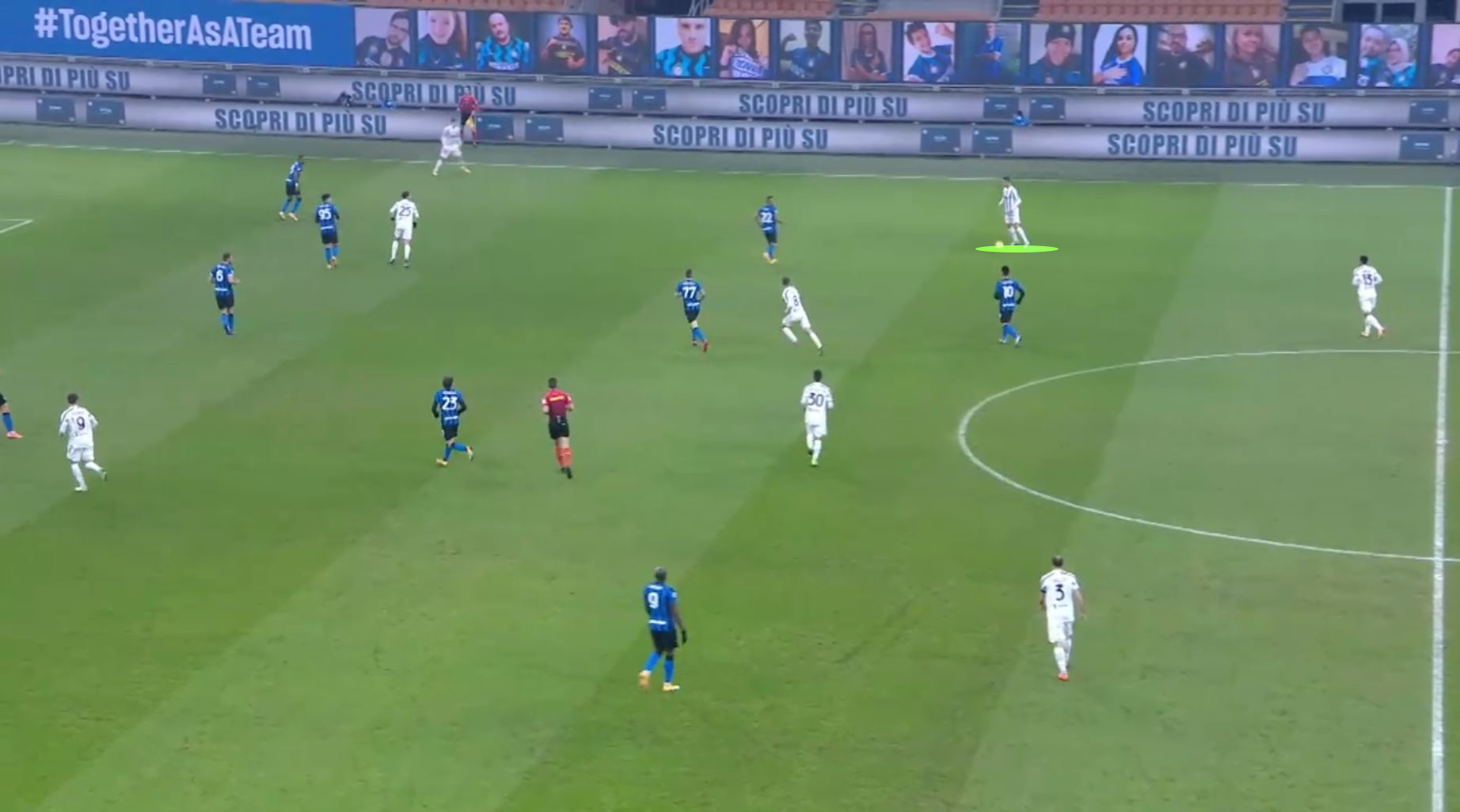 –
––
For a good part of the game, Ronaldo looked for reception on the right, also moving a long way from the center. His interpretation of these situations, however, does not always help Juventus to exploit the spaces it can create.
Juventus has now learned to accept every nuance of Ronaldo’s character, compensating for his movements, filling the area in a varied and effective way, but sometimes a single hitch in the constellation of rotations is enough to crack the effectiveness of the whole staggering.
In this case, Rabiot’s match on the center-right was enough, a position in which the French loses a lot of naturalness both with the ball at his feet, and when he has to propose himself in the spaces, to help outside.
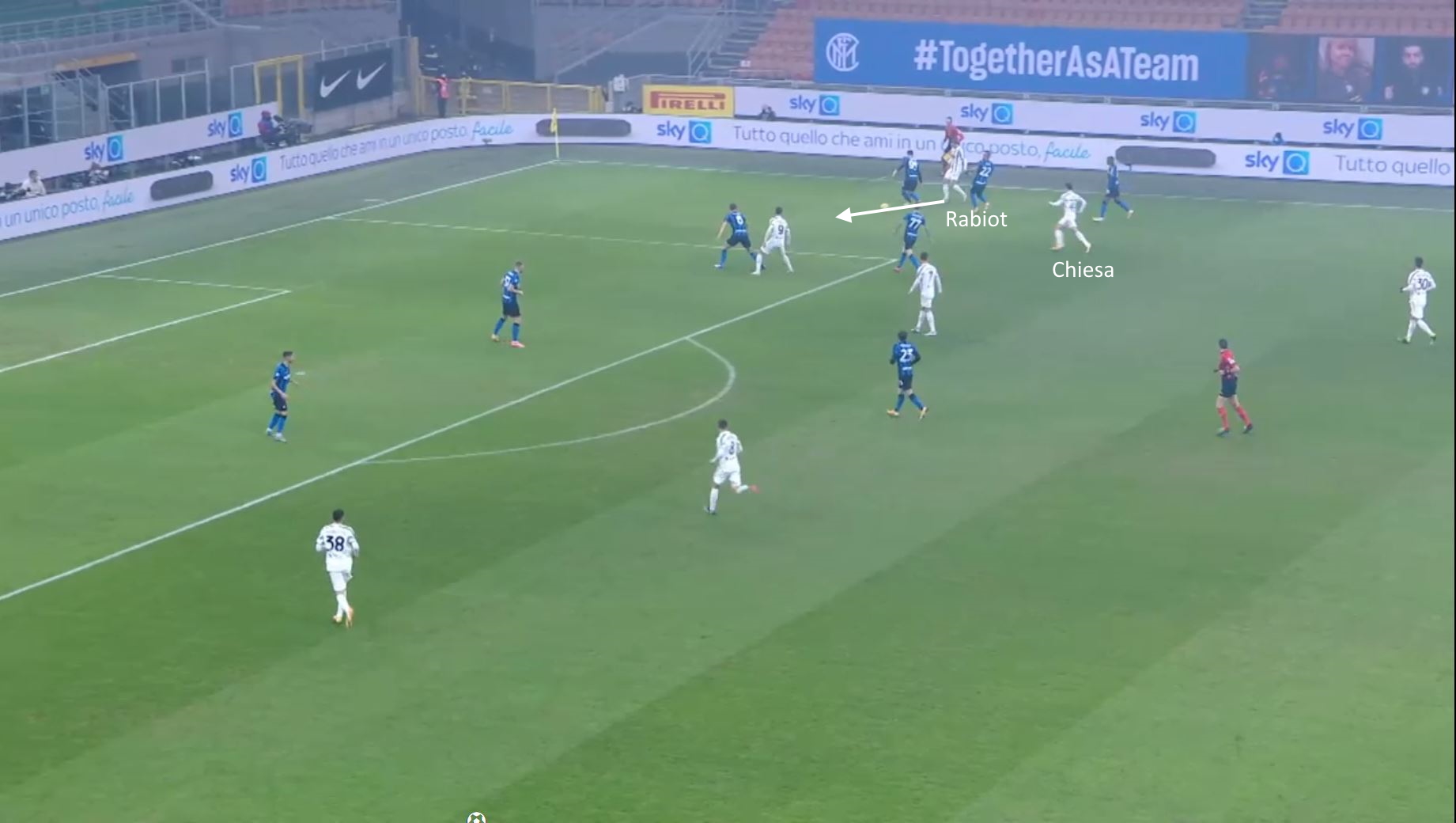 –
–
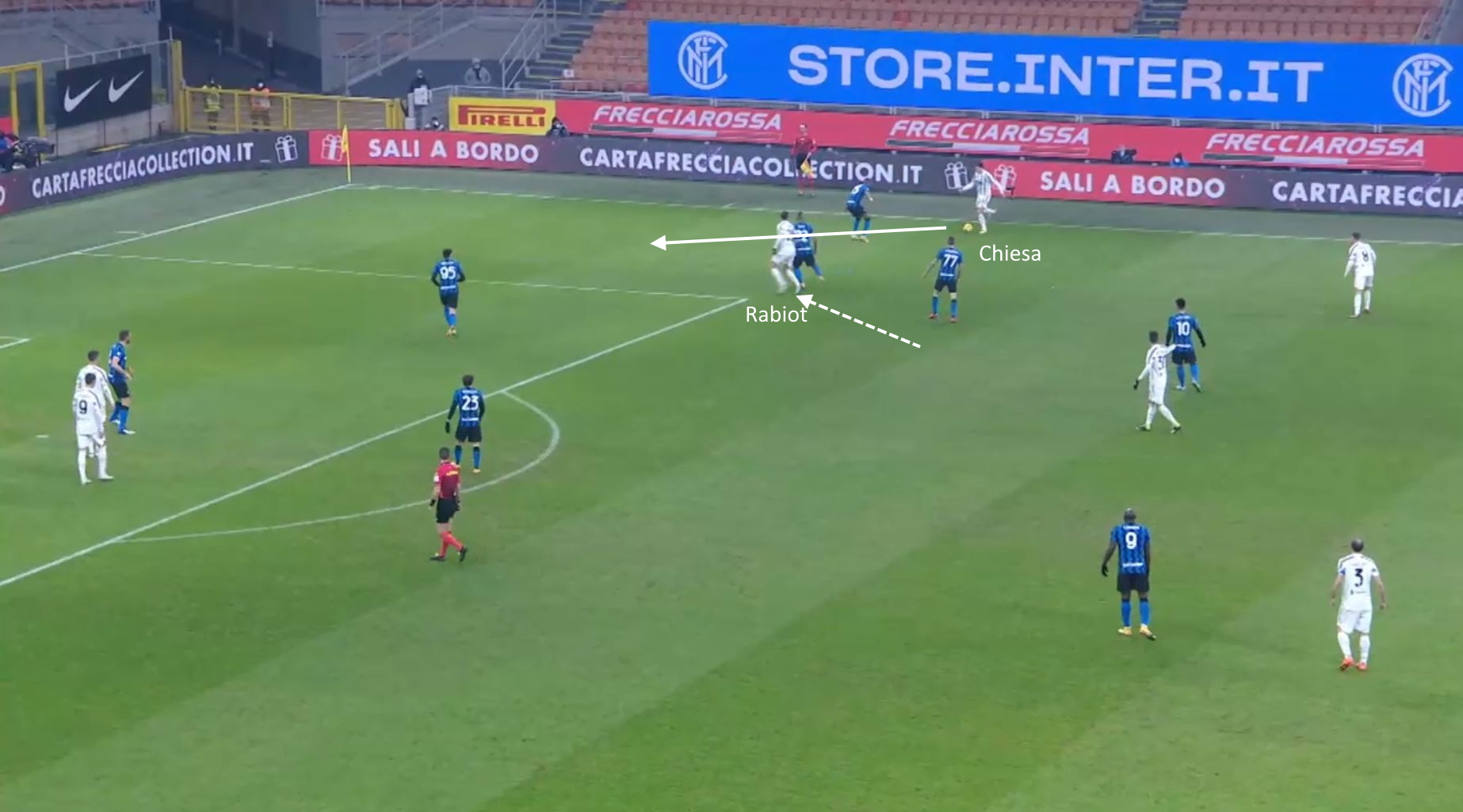 –
––
The difficulties of Rabiot on the right: in the first slide, he reads the situation wrong and makes a right pass unattainable for Chiesa, handing the ball to Inter; in the second, he begins to unmark himself by running deep, but he suddenly slows down, nullifying the passage of the Church.
With no credible outlets in the central area, Juventus failed to take advantage of Morata’s connection work to take the defense out of position, on the contrary the Spaniard was soon cut out, becoming nervous as well. To all this was added the low contribution of Bentancur, who seems unable to evolve his style of play with the ball, always too staid and fearful for Juventus’ ambitions.
Reasoning in the abstract, a possible solution to find some more space between the lines could have been the enlargement of the defensive trio, with consequent lowering of Bentancur. In this way, Frabotta too could have raised his position more easily (on some occasions, during the low setting of Juve, he found himself receiving in the defensive half with the man already too close). Having two lefties on the left side of the pitch in the first build was not common this year for Pirlo, but perhaps taking advantage of the naturally more suitable passing angles of a natural lefty, like Chiellini, to find space behind Hakimi by throwing Frabotta would have it could have been a way to create a marking crisis in Skriniar. Frabotta, on the other hand, found himself attacking against frequent doubles (brought very well by Inter, even on the opposite side), and was unable to score.
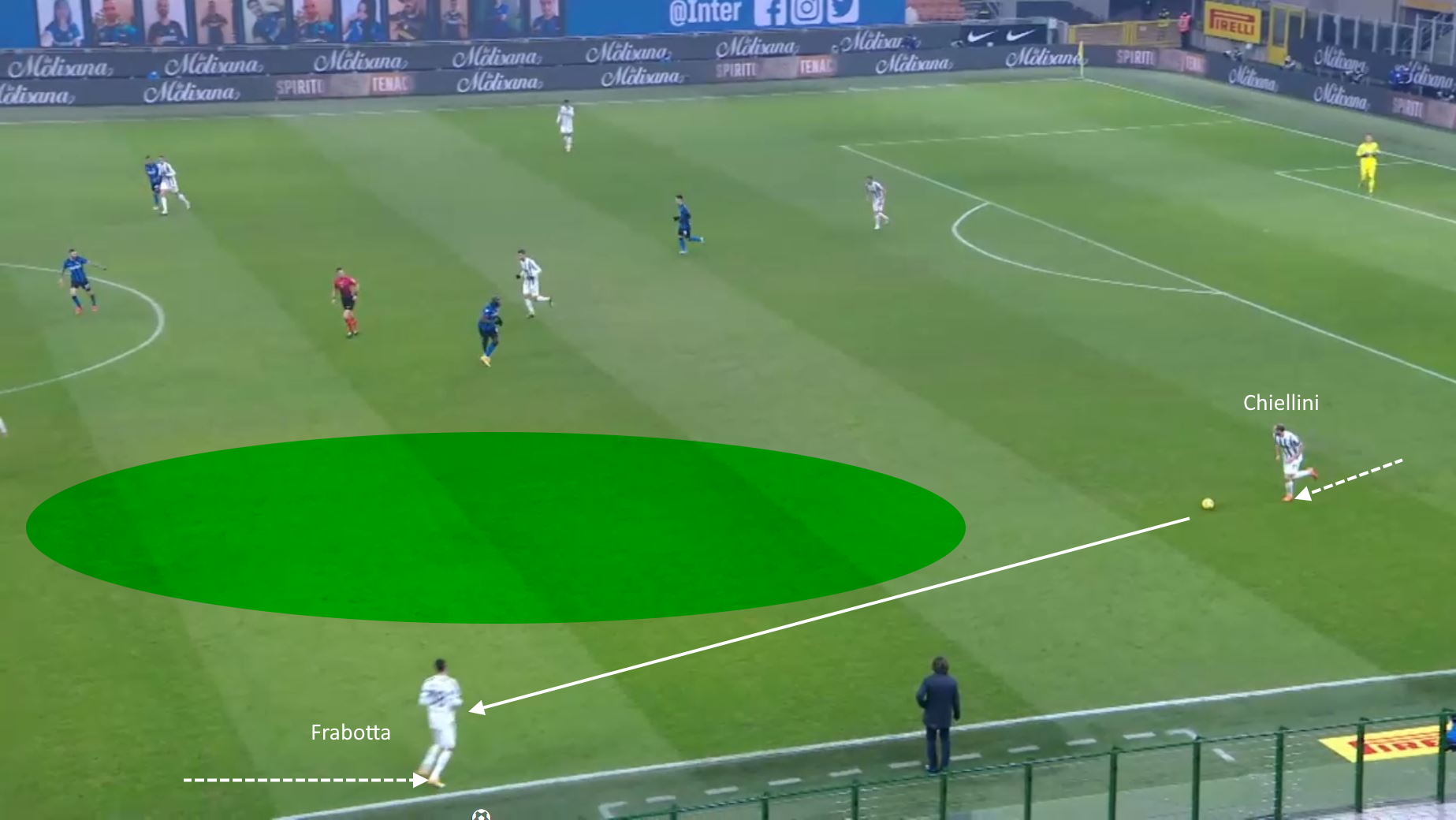
In this case, for example, Chiellini has room to lead, but Frabotta goes to meet him and receives the ball in midfield, without adding anything to the offensive possibilities of the action.
Juve could solve many of these problems in the possession phase by recovering the absent owners for Covid, perhaps accompanied by a growth in the performance of players with a certain caliber of technical personality, such as Arthur or Dybala. The next few weeks, full of close decisive commitments, however, could be a trap for the evolution of Pirlo’s projects, which will have to be good at managing the psychological repercussions of one of the worst performances of the season.
Inter, on the other hand, seems to have definitely become aware of their strengths and weaknesses: a slight lowering of the center of gravity and a return to the stable of the three-man median have restored the solidity that seemed lost between the end of last season and the beginning of the current one. In this period, then, Conte’s team seems to have gained quality in the last quarter of the pitch, thanks to men other than his iconic strikers, first of all Hakimi and Barella. This match told us relatively little new about the qualities and perspectives of the Nerazzurri, but the victory born of a great performance in such an important match was essential to consolidate progress and remove the ghosts and waste of elimination from the cups.
– .
